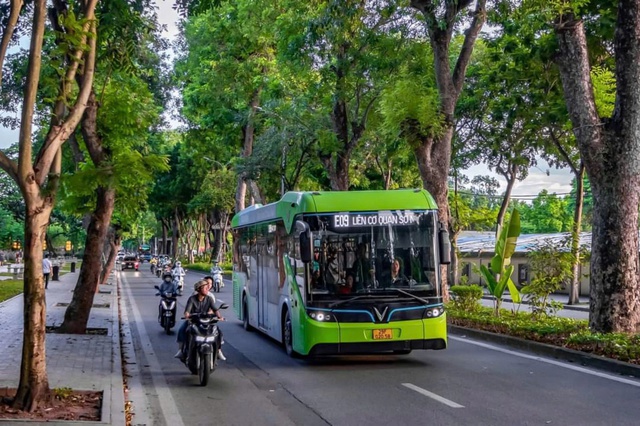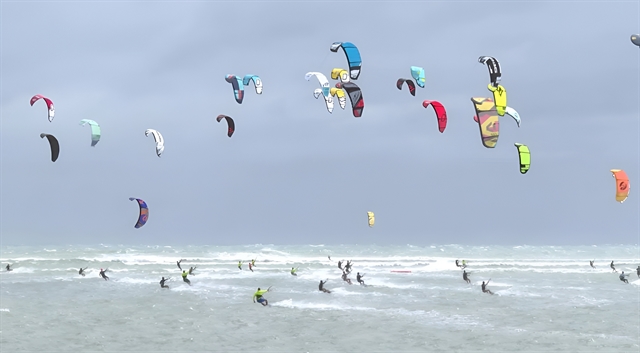 Opinion
Opinion

It has been nearly 10 years since the India Việt Nam strategic partnership was established and during this phase India - Vietnam relations have strongly developed in multiple areas such as politics, economic, trade and investment areas as well as internal security discussions, defence cooperation and cultural interaction. In such a milieu, Indian Prime Minister Modi’s visit to Việt Nam is coming after more than 15 years since Prime Minister Vajpayee visited Việt Nam in 2001 has a substantive significance.
Dr. Pankaj K Jha, Director (Research), Indian Council of World Affairs (ICWA), India
and Dr. Võ Xuân Vinh, Institute for Southeast Asian Studies (ISEAS Việt Nam)
It has been nearly 10 years since the India-Việt Nam strategic partnership was established, and during this phase India-Việt Nam relations have strongly developed in multiple areas such as politics, economics, trade and investment, as well as internal security discussions, defence co-operation and cultural interaction. In such a milieu, Indian Prime Minister Modi’s visit to Việt Nam - more than 15 years after Prime Minister Vajpayee visited Việt Nam in 2001 - has substantive significance. The two sides have developed comprehensive understanding in the fields of defence, economics, culture, education, training, entrepreneurship development, internal security and commercial ties. First and foremost, the two countries need to work together as strategic partners and think about the future challenges in a more coherent and co-operative way. The co-operation in multilateral institutions such as ASEAN, East Asia Summit and ADMM+ need to be clearly outlined, and dialogue between the two sides could take place at regular intervals.
Prime Minister Modi’s visit to Việt Nam, especially at a time when India and Việt Nam would be celebrating 45 years of diplomatic relations and 10 years of strategic partnership, would set a new agenda for the coming years. The areas that Prime Minister Modi might stress during his visit to Việt Nam are in the fields of education, trade in services, promoting mutual investment, space, white shipping information, training of armed forces, joint exercises, military equipment sales, cybersecurity, renewable energy, traditional medicine and health co-operation, particularly telemedicine. The strategic partnership between the two countries must be elevated to a ‘Comprehensive Strategic Partnership’ or ‘Preferred Strategic Partnership’ to provide a necessary impetus for long-lasting friendly ties. India-Việt Nam ties in the fields of defence, energy security and the exploration of oil and gas resources have been landmark achievements between the two countries.
The line of credit of US$100 million needs to be increased so that Việt Nam’s defence forces can procure weapons and weapon systems from the Indian defence industry. The two countries can commission joint pilot projects and further engage private players in their respective defence industries. As a starting point, the two countries can commission pilot projects in select areas such as missile boats and ruggedised hovercrafts. There is a need to explore possibilities for non-lethal systems in both countries. Possible areas of co-operation include coastal surveillance radars and monitoring devices. Moreover, India’s supply of a series of 140-tonne fast patrol boats to the Việt Nam Navy should also proceed as scheduled. The two countries may discuss the possibility of India supplying BrahMos missiles to Việt Nam, since Moscow had already informally given its nod to New Delhi to supply the missiles to Hà Nội.
The two countries are in the most economically vibrant regions of Asia and need to build synergies in terms of joint research in science and technology, particularly cognitive sciences, metallurgy, nuclear co-operation for peaceful purposes like nuclear medicine, fertilisers, research on high-yield rice varieties, food processing, port management, ship building, urban planning and data information services. This would ensure that initiatives such as Digital India, Make in India and Skill in India are interconnected with Vietnamese expertise and programmes in related fields. Việt Nam needs to integrate its information highway and value addition chain with India’s larger production networks.
Prime Minister Modi’s visit would also outline India’s role in multilateral frameworks and shed light on how India is ready to work towards peace and prosperity in the region. The South China Sea issue needs to be dealt with sensibly, but it should not give any undue advantage to any particular country. Prime Minister Modi’s vision for Southeast Asia, and particularly Việt Nam, is meant to create synergies and pool the best human resources for faster development. This visit would outline core economic relations including trade, investment and trade in services, capacity building, training, education and promoting cultural ties.
With this regard to economic relations, Việt Nam is a viable destination for India’s services exports, and Việt Nam’s market is still growing. Synergies in this regard can be developed. In terms of trade, the two countries need to reach the $15 billion mark. There is a need for diversification of trade given the fact that the two countries share similar numbers of negative list items, including tea, coffee, rubber and pepper. In the defence sector, there are a lot of possibilities with regard to training and joint research of body armour and mine detection technologies and small arms like short range missiles and handheld weapons, which can be used for coastal security and defence of vital installations. The two countries need better infrastructure exchanges with regard to island territories and concretised bunkers for protecting its personnel. The two countries need to work out a long-term plan of action on defence infrastructure, electronic warfare and submarine detection technologies. The two countries can pool resources in developing command and control systems. Developing a railways network, and Rapid Transport Systems such as the metro, need further discussion between the two countries. Possibilities exist in these two sectors. India can be the preferred partner for Việt Nam. India has been quite successful in the development of generic medicines and low-cost varieties of many life-saving drugs.
Space technology, particularly for research and geo-spatial mapping, would help in planning and agriculture. Further, the transmission of data and information, as well as micro and nano satellites for scientific research, needs to be promoted. This would build synergies between scientists and research institutions as well as develop capacities in the science and technology field. India-Việt Nam co-operation in the next decade will be built on training, education and capacity building. The three major pillars of this partnership will be Scientists, Engineers and Technicians (SET).
India’s Act East Policy (AEP) is primarily an action-oriented approach and clearly outlines the sectors of defence, investment, trade and culture as the four pillars of sustained engagement. Việt Nam has remained one of the most preferred partners in the region and this has been exemplified by high-level visits between the two sides. Under the Act East Policy, India has already outlined a few sectors for which it is looking forward to its co-operation with Việt Nam. This includes defence co-operation and co-operation in the fields of nuclear and energy security, financial sector reforms, services, education and space co-operation.
One element which is of paramount importance for both countries is co-operation in the energy sector, renewable energy, efficient technologies and cybersecurity. The development of Special Economic Zones in Việt Nam needs to be explored under the Act East Policy to reap economies of scale. In Việt Nam, India seeks to project its core national interests and articulate its strategic outlook in the Indo-Pacific region. With Việt Nam and Japan it can explore trilateral understanding in strategic defence and trade co-operation. The AEP has outlined India’s responsible stakeholders in the region and Việt Nam is the most important anchor for India. In the Indo-Pacific region, Việt Nam will remain a friendly country and welcoming port to India, and vice versa.
India has arrived at the international stage and it would not be wrong to say that it has a stake in the peace and security of the Indo–Pacific region. India’s role in the Indo-Pacific region is not only as a stabiliser, but also as a nation with far-reaching strategic and commercial interests. India is growing and it needs markets and secure sea lanes for maritime trade, which can help in furthering its economic interests. India has been exploring energy and natural resources to sustain its economic growth. However, the country has always adopted a policy of partnerships and development. The harmonious relationship does not mean that India would be a silent onlooker; it has stakes and it would protect its commercial and strategic interests all across the Indo–Pacific region. For India, it is important that a legally binding Code of Conduct related to the South China Sea be signed at the earliest convenience. The issue might get more complicated in due time in tandem with increasing militarisation. Rule-based order is required and India has always abided by the PAC verdict in the case of the India-Bangladesh Maritime dispute. China should also emulate the same sentiment. Instead of asserting itself as the rising power, it should become a responsible power, as is expected of a permanent member of the Security Council.
(Viewpoints reflected in the article are of the authors, not those of ICWA nor ISEAS Việt Nam).




